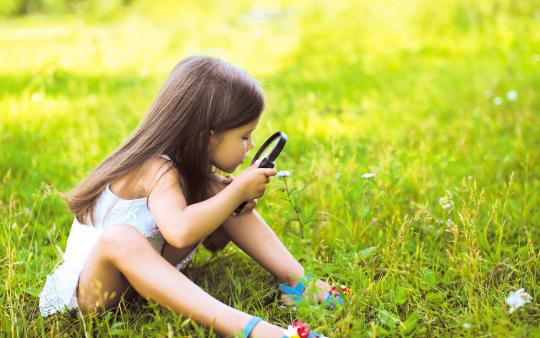As a high school teacher, I shied away from textbooks and worksheets in favour of digging into topics more holistically through projects, discussion, documentaries, readings, and more. I like to bring that type of study into our home through inspiration stations that invite our children to explore a topic in multiple ways. These stations may include a multi-sensory exploration using the senses of sight, touch, smell, sound and taste. Below are a few tips for creating your own inspiration stations this summer and into the school year.
Topics/Themes
There are a number of ways to choose topics for your stations. If you’re more interest-led, you can follow your child’s lead and tune in to what they are passionate about at the moment. If you’re following a curriculum, hit the books and find out what topics you didn't spend enough time on this school year. To take either of these a step further, follow the seasons – choose frogs in the spring and apples in the fall, for example. The summer offers so many opportunities for investigation of pond water, insects, soil, plants, and more!
Setting Up Your Station
The very first thing to consider is the age and ability of your child. Think about making it age and ability appropriate, and at the same time challenging and stimulating so that they can revisit the station and learn more with each new investigation. I like to make our stations visually appealing so they beckon to the kids, and also because they are out in the open in our dining room for all to see! You may want to include items such as:
- books related to your topic – story books and/or resource books (have one or two with welcoming covers standing upright, and the rest in a basket)
- sensory items to look at, feel, smell, and listen to
- an activity - a puzzle, matching game, problem to solve, experiment, recipe, etc.
- a magnifying glass and/or microscope for up-close viewing
- blank and lined paper and pencils for sketches and notes
- pencil crayons, beeswax crayons or watercolours for creating art



Beyond the Station
Once your child has moved on from the station (possibly a few days to a couple of weeks, depending on the amount of materials you put out and how your child engages with the space), or during the exploration phase, you can plan a field trip to learn more and maybe bring some materials back to add to the station for further investigation. Studying frogs? Head to your local nature centre to do some pond dipping. Learning about sheep or wool? Visit a local farm or arts centre where your children can try carding, drop spindles, and check out spinning wheels. For life cycles of a seed, get out in the fall to harvest apples and put them up for the winter by making applesauce, pie and more. Even better if you can get out to see the apple trees at various stages of the cycle!



For some thematic inspiration station ideas check out Fall Leaves Inspiration Pack and Pumpkin Mini Inspiration Pack (free) over at Tiny Peasant.










